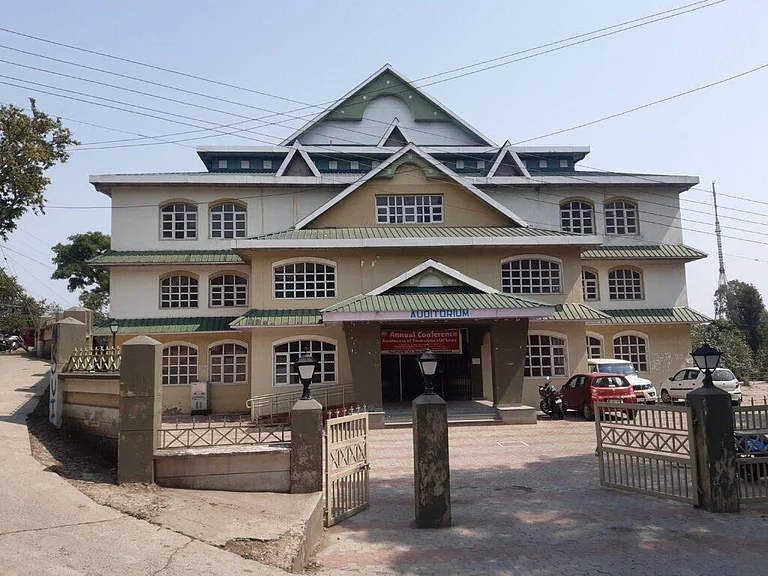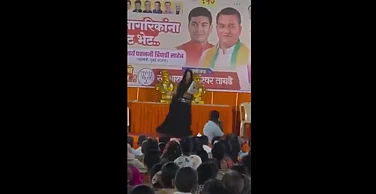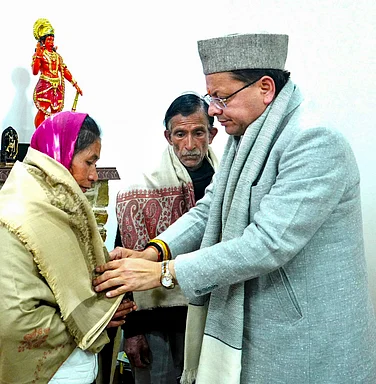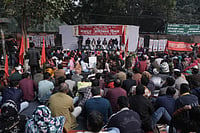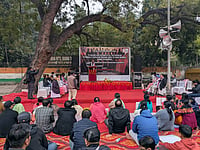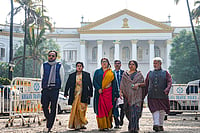The recent case of Nimisha Priya, an Indian nurse, who has been sentenced to death in Yemen for the murder of a Yemeni national, has garnered national attention, sparking enduring diplomatic efforts and appeals for clemency.
The death sentence that was scheduled to be held on 16th July got postponed due to the interference of a religious figure, AP Aboobacker Musliyar. A Sunni leader from India who reportedly facilitated negotiations in Yemen with help from a Sufi scholar there. The scholar's representatives reportedly met those representing Mahdi's family for discussions on stopping Nimisha's execution.
This case has also sparked debate about how India applies the death penalty at home and how it responds when its citizens face capital punishment abroad.
Trial Court Sentencing Trends and Use of the Death Penalty
The death penalty in India is still a legal punishment, but it is meant to be used only in the "rarest of rare" cases. This idea was established by the Supreme Court in the 1980 case Bachan Singh v. State of Punjab. In this decision, the court said that a death sentence should only be given when the crime is so serious that life imprisonment is not enough. Judges are supposed to consider both the details of the crime and the background of the person who committed it. If there's any possibility that the person could reform or that life imprisonment could be a fair punishment, then the death penalty should not be used.
Despite this strict rule, trial courts in India continue to award death sentences frequently, especially in cases involving murder and sexual violence. In 2023, over half (53.3 per cent) of all death sentences were given in cases that involved both crimes. Alarmingly, 75 per cent of these cases had victims under the age of 12. This reflects the strong emotional and political reactions such crimes provoke, particularly when children or women are involved.
Although trial courts frequently impose the death penalty, actual executions are rare. Since 2004, only eight people have been executed in India. These include individuals convicted in high-profile cases such as the 2008 Mumbai attacks and the 2012 Delhi gang rape. This gap between the number of death sentences and executions raises serious legal and ethical questions about the justice system’s consistency.
According to the Annual Statistics Report by Project 39A for 2022 and 2023, India’s death penalty system continues to show inconsistency and delays. In 2022, trial courts handed down 165 death sentences—the highest in over two decades. A major contributor was a single case in Ahmedabad where 38 people were sentenced in connection with the 2008 serial bomb blasts. In 2023, new death sentences dropped to 120, a 27.27 per cent decline. However, this did not reduce the number of prisoners on death row, which rose from 541 in 2022 to 561 in 2023—the highest total in nearly 20 years.
This increase is not driven by more convictions but by slower appeals. In 2023, High Courts completed 57 cases involving 80 death row prisoners—fewer than the 68 cases involving 101 prisoners in 2022. Compared to the average between 2016 and 2022, this marks a 15 per cent drop in disposal rates. Only one death sentence was confirmed by a High Court in 2023, the lowest since Project 39A began tracking such data. The Supreme Court confirmed none.
These trends suggest that higher courts are approaching capital punishment with greater caution. In 2022, High Courts commuted 48 death sentences and acquitted 43 people. In 2023, they commuted 36 and acquitted another 36. The Supreme Court also showed restraint, acquitting six people and commuting the sentences of three. In many of these cases, serious issues were noted with investigations, trials, and evidence presentation, raising concerns about fairness at the trial level.
Professor Anup Surendranath, Executive Director of Project 39A, believes the frequent imposition of death sentences at the trial level reflects deeper systemic issues. “The exaggerated and unjustified use of the death penalty by trial courts is alarming,” he says. “It is evident from the Supreme Court’s decisions over the last eight to nine years that there are serious concerns about the manner in which trial courts are imposing the death sentence... Over the last forty-five years of its existence, the ‘rarest of the rare’ doctrine has been exposed as a completely hollow doctrine—it has, more or less, become whatever each judge wants it to mean.”
Procedural Safeguards and Judicial Oversight
The urgency of punishing crimes involving sexual violence has resulted in pressure on police, prosecutors, and courts to act swiftly. In 2022, 51.28 per cent of death sentences involved sexual offences. That figure rose slightly in 2023. Among those cases, 75 per cent involved children under 12. This climate of public outrage often leads to harsh sentencing, sometimes at the expense of due process and consideration of whether the convict can reform. Surendranath notes that in this environment, some judges seem to believe it's acceptable to impose the death sentence and let appellate courts fix mistakes later, a mindset he describes as “deeply troubling.”
In Manoj v. State of Madhya Pradesh (2022), the Supreme Court ruled that sentencing in death penalty cases must be informed by detailed background information about the convict, such as mental health, personal history, and capacity for reform. However, trial courts are not consistently applying this directive. In 2022, only one out of 24 reviewed cases followed the requirement. In 2023, only nine out of 69 reviewed cases showed judges requesting such information. Of the 94 people sentenced that year, just 10 had any mitigation material presented. In 91.3 per cent of cases, the prosecution submitted no evidence about the convict’s potential for reform.
Another concern is how quickly trial courts move from conviction to sentencing. Legally, this stage should be separate to allow time for both sides to present arguments on punishment. Yet in 2023, 37.14 per cent of death sentences were imposed on the same day or the next day after conviction. Only 17.14 per cent had a gap of more than a week. The 2022 figures reflect a similar pattern. This haste suggests a lack of deliberation in decisions with life-or-death consequences.
The data from Project 39A underscores the growing gap between lower and higher courts in death penalty cases. Trial courts often move quickly to impose the death sentence, while appellate courts proceed with more caution, frequently identifying flaws in the original trials. Although the number of new death sentences declined in 2023, the overall death row population continues to grow. This highlights the urgent need for reform to ensure fair trials, proper investigation, and a sentencing process that truly reflects the "rarest of rare" principle.
Legal Representation, Public Opinion, and Systemic Bias
Several historical cases highlight India’s use of the death penalty.
Rattan Bai Jain, a 35-year-old doctor from Delhi, became the first and only woman executed in independent India for poisoning three women in 1954. She was hanged in Tihar Jail on January 3, 1955.
Dhananjoy Chatterjee was executed in 2004 for the 1990 rape and murder of 18-year-old Hetal Parekh in Kolkata, based on circumstantial evidence. It was India’s first execution in nine years.
Afzal Guru was hanged in 2013 for aiding the 2001 Parliament attack. Though he retracted his confession, alleging coercion, the Supreme Court upheld his death sentence in 2005. His execution sparked protests in Jammu and Kashmir.
Yakub Memon, convicted for the 1993 Bombay bombings that killed 257, was hanged in 2015. He claimed he voluntarily returned to cooperate, but courts dismissed this. Surendranath notes that such executions are often “politically symbolic,” raising concerns that the death penalty may sometimes serve “state messaging or populism” rather than justice.
Ajmal Kasab, the lone surviving 2008 Mumbai attacker, was convicted on 80 charges and executed in 2012, supported by video and eyewitness evidence.
Devinder Pal Singh Bhullar was sentenced to death for a 1993 bomb blast but was later given life imprisonment in 2014 due to delays and mental illness, despite a split 2-1 Supreme Court decision upholding his original sentence.
Such cases, says Surendranath, reveal how “shoddy and manipulated investigations, the poor quality of evidence, and the rampant use of custodial violence” have resulted in wrongful or premature sentencing. He adds that, “A vast majority of death row prisoners are extremely poor and with hardly any means to have effective legal representation (irrespective of whether it is state legal aid or private representation).”
According to legal expert Yug Mohit Chaudhry, “Poor legal representation is the single largest contributory factor to the infliction of capital punishment,” and, he says bluntly, “capital punishment is a punishment reserved for the poor. People are sentenced to death for the crime of being poor, not for the crime they may have committed–as they say in America, those without the capital get the punishment.”
He argues that the problem is worsened by a lack of objectivity in public opinion, often shaped by state messaging and media spectacle. “The sensationalising of crime and punishment by the electronic media in a bid to garner more TRPs has had a very deleterious effect. It has turned capital punishment into a spectacle, where mock executions and make-shift gallows are erected in studios before each hanging.”
Chaudhry points out that even victims’ families have, in some cases, refused to demand capital punishment, including in the Rajiv Gandhi assassination and the Graham Staines murder. “It is possible for victims to eschew the death penalty,” he says, “but it is too much to expect this of a victim, and therefore, though legal systems do provide space for the victim's voice in the sentencing exercise, the decision is not left to them.”
For many, the psychological toll of indefinite waiting under a death sentence is a punishment in itself. “We are inflicting the suffering of living under the sentence of death in a shockingly callous manner,” says Surendranath. Chaudhry concurs, calling the experience “an unavoidable cruelty built into the system” that, in his view, “can only be cured by abolishing capital punishment itself.”









